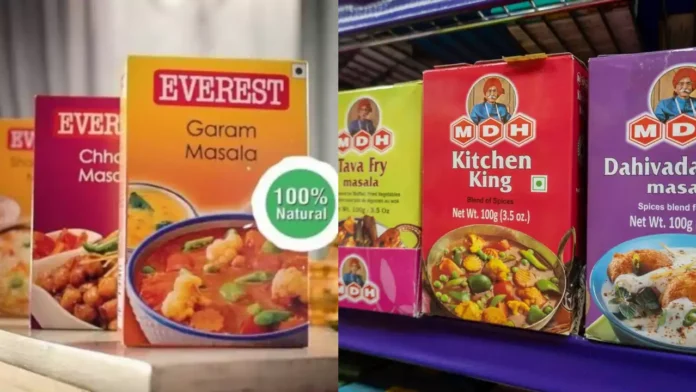Indian authorities have engaged with top spice brands Everest and MDH, which have faced bans in Singapore and Hong Kong due to the detection of ethylene oxide. Inspections of their manufacturing facilities have been conducted, and recommendations for corrective actions have been made. “We have held three consultations with the industry,” a senior official noted, emphasizing the industry’s earnest approach in addressing the issue and ensuring compliance with maximum residue limits. It was noted that certain export samples failed to meet standards in the aforementioned countries, prompting the recommendation of corrective actions based on these findings.
Continue Exploring: After Hong Kong Ban, New Zealand investigates contamination concerns in MDH and Everest Spice products
“We are ensuring that supply chain issues are addressed so that those products can be traced to countries, and country-specific guidelines are met with,” said the official. They emphasised that the testing, storage, transportation, and production of spices were all covered by the inspections. All spices exported to Hong Kong as well as Singapore must now undergo an ETO test, according to a statement made earlier this month by the Spices Board of India, the main organisation in charge of spice exports. In 2022, the ministry also required ETO testing for spices going to European markets. In addition, the board has released extensive guidelines that cover this matter and include alternate sterilisation techniques like irradiation and steam sterilisation.
The guidelines also outline standards for packaging, transportation, sample handling, and testing. Non-compliance with ETO regulations by Everest and MDH in Singapore and Hong Kong resulted in the recall and ban of certain batches of their products from these markets.
Hong Kong prohibits the presence of ETO in its food products, while Singapore maintains a limit of 50 parts per million. In the EU, the allowable limit ranges from 0.02 to 0.1 mg per kg. The American Spice Trade Association has acknowledged that ETO is permitted for use in spices. According to US regulations, 7 ppm of ETO and 940 ppm of 2-chloroethanol (2-CE) are allowed. “There is a lack of standardization in ethylene oxide limits or testing protocols globally,” added another official.
Continue Exploring: MDH and Everest spice controversy threatens over half of India’s spice exports, urgent action needed: Report



